The Golden Age of Rolex Movements Part II: Rolex gets Complicated with Innovations and Patent Registrations
by Tim Mosso
From the public’s perspective, Rolex’s surge into its movement revolution began with the now anachronistic-sounding Basel 2000 World Watch, Clock, and Jewelry Show. But the evidence of a long-term engineering campaign was mounting at the patent office and in the dealers’ showrooms.
Consider the 2005 Cellini Prince, highlighted previously in The Golden Age Of Rolex Movements Part I: Sowing The Seeds Of Greatness.
Rolex made the Cellini Prince an early recipient of the Paraflex shock system, a tangible sign of Rolex’s progress internalizing the movement production of all components. Achieving proprietary shock protection is an extraordinary feat; only massive firms such as the Swatch Group and Seiko Epson or single-purpose suppliers such as KIF Parechoc produce these subassemblies.
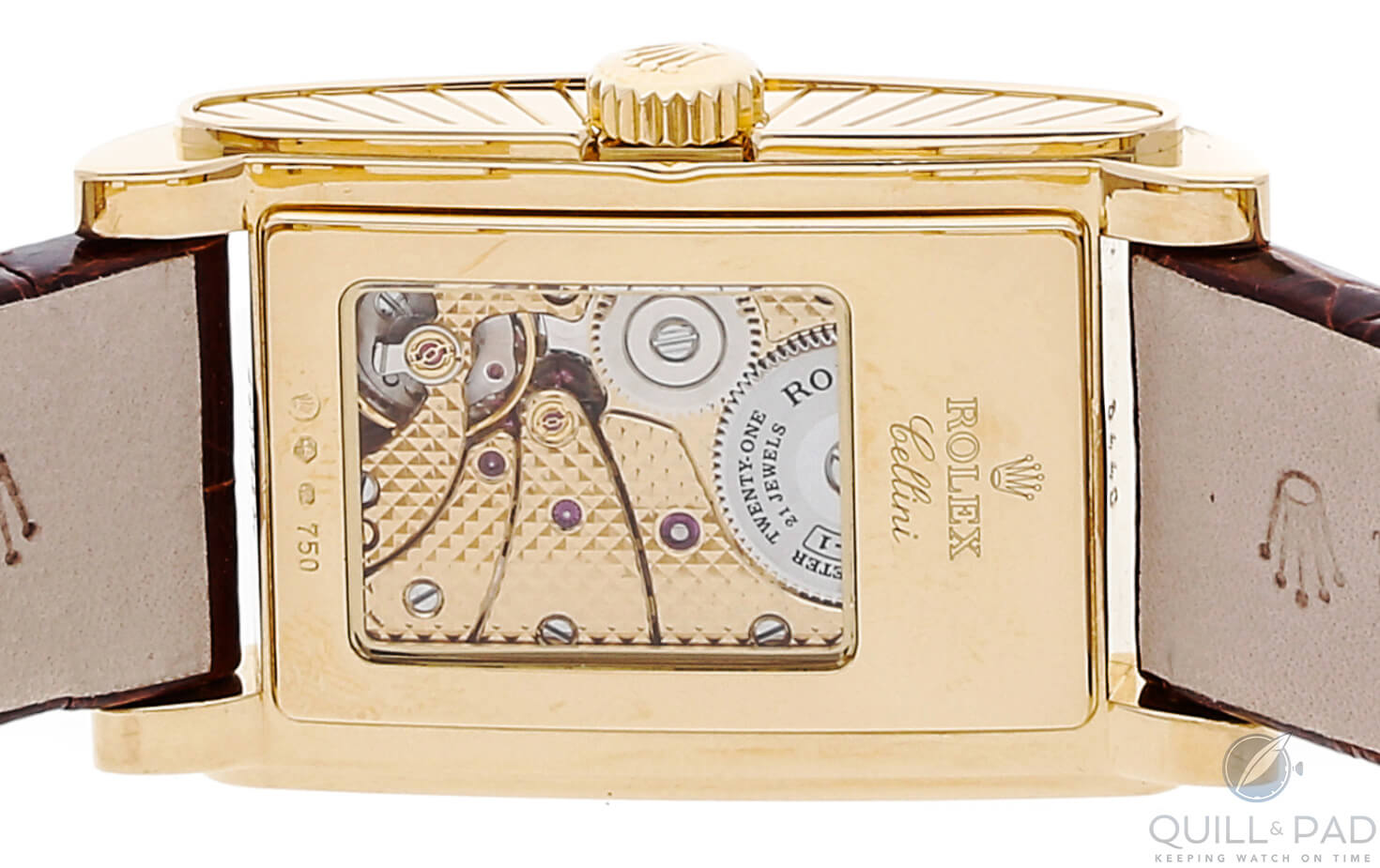
Rolex Cellini Prince Caliber 7040 (photo courtesy WatchBox)
Meanwhile, at the patent office . . .
Components such as shock springs are as significant to the Rolex watchmaking revolution as the rock-star movements themselves. And Rolex often telegraphs its next moves – and movements – with patent applications.
————————————————————————————————————–
—————————————————————————————————–
For example, trace the Rolex patent breadcrumb trail to a June 1998 application for U.S. patent number 5881026, “A self-compensating spring for a balance-spring . . . made of a paramagnetic Nb-Zr alloy containing between 5% and 25% by weight of Zr.”
Just like that, Rolex dropped the Parachrom alloy for its future nonmagnetic hairsprings.
U.S. patent number 6329066 requested in March 2000 specified “a self-compensating spring for a balance-wheel oscillator . . . and process for treating this spiral . . . the oxide layer which forms has a thickness of the order of 50 nm, giving the spiral a blue color.” As in this fashion, the current Parachrom Blue hairspring was born.

Fitting a Rolex balance wheel and Parachrom Blue hairspring to a movement
Rolex [Yacht] masters high complications
Look back even farther, and one begins to grasp just how long certain ideas gestate inside the Rolex fortress.
In January of 1989, Rolex filed for U.S. patent number 4866684 to protect its concept of a “Chronometer for starting races, particularly regattas.” Details of the application text include mention of a dedicated ten-minute countdown scale.
Granted, this project also included mention of an electronic drive system, but the bug had been planted: Rolex was thinking about a dedicated regatta chronograph three years before the first time-only Yacht-Master broke at the 1992 Basel Fair.
Look back even farther, and it becomes evident that Rolex prototyped a Yacht-Master chronograph during the late 1960s.

A 2007 Rolex Yacht-Master II in precious metal (photo courtesy WatchBox)
Baselworld 2007 witnessed the end of this extraordinary incubation cycle in the form of the Yacht-Master II. At the time, the watch was the most complex Rolex product ever sold. Caliber 4160 comes on strong: the Daytona’s 70-hour reserve, ball-bearing rotor, vertical clutch, column wheel, and robust architecture carry over from the 4130 movement.
To this functional core, Rolex added a programmable countdown system with a memory capability that resets to its specified interval without fail until reprogrammed. The Yacht-Master II is designed to act as a flyback and fly-forward chronograph to center on the nearest minute when actuated.
Finally, all programming is performed with a “Ring Command” bezel that doubles as part of the movement itself.

Rolex Caliber 4161
—————————————————————————————————–
—————————————————————————————————–
For the first time, Rolex began to offer public insights into advanced industrial procedures used in the fabrication of its movements. Contemporary press dispatches from Geneva boasted of employing the micro-manufacturing technique “Lithographie, Galvanoformung, Abformung” – better known as LIGA profiling, which sees nickel-phosphorus components “grown” on a substrate for perfect geometry – for the most sensitive and tolerance-intensive mechanical components.
Considering how niche the regatta timer function was in 2007 and remains today, the level of engineering investment was stunning. But the new movement wasn’t perfect.
Caliber 4130 was more sensitive to maintenance intervals and more susceptible to rough handling than previous Rolex movements. Reset action and the flyback/fly-forward function often developed lag or stalled entirely, and given the quantum leap of complexity for Rolex calibers this wasn’t shocking.
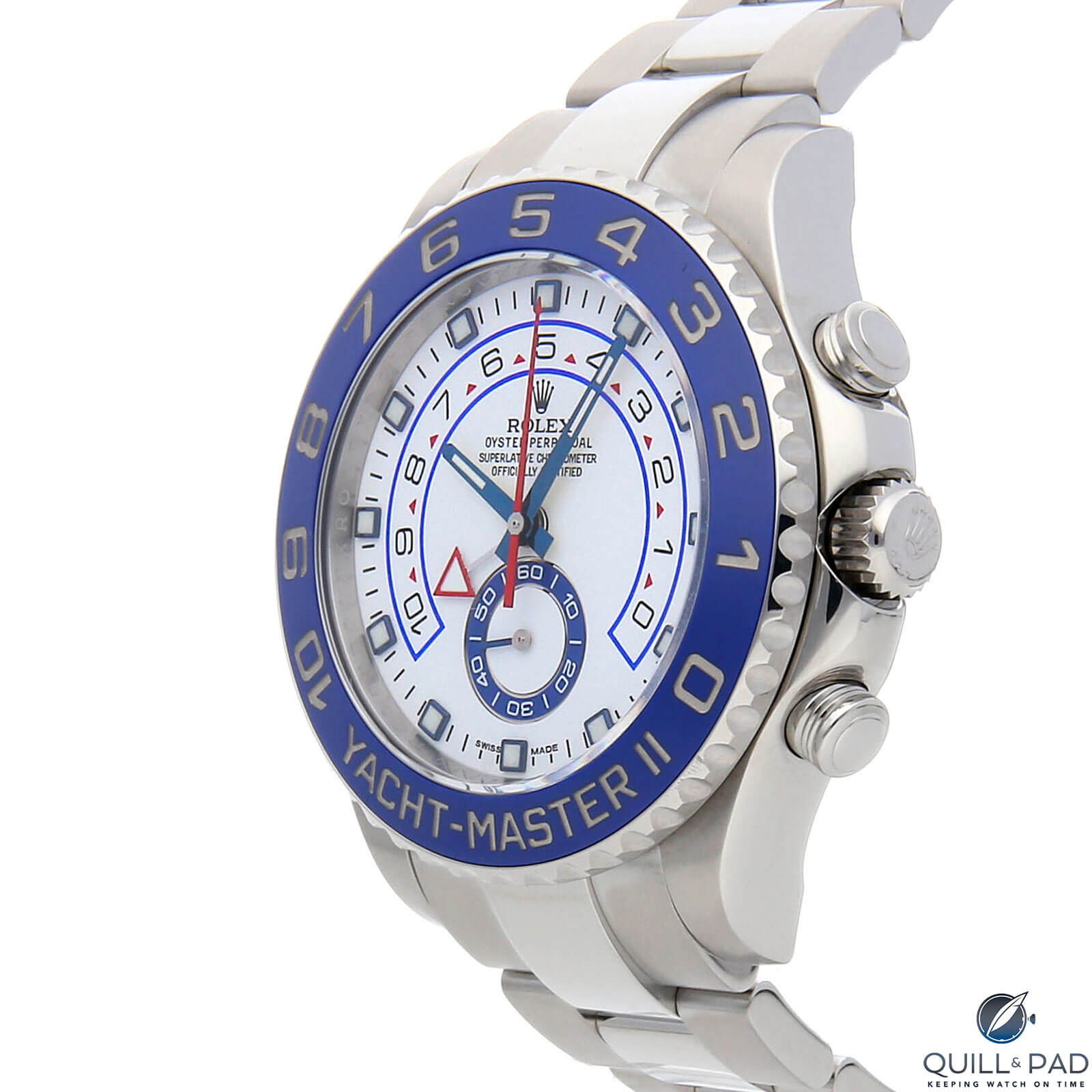
A 2013 stainless steel Rolex Yacht-Master II (photo courtesy WatchBox)
A reboot of sorts occurred in 2013 with the arrival of the long-awaited stainless steel Yacht-Master II. The undercard of this marquee launch was the revised Caliber 4161. More robust and more consistent, the 4161 brought the Yacht-Master II on par with the Daytona’s reliability and crisp pusher feel.
Rolex Sky-Dweller: the sky is the limit
But 2013’s detail revisions to Caliber 4161 barely registered amid the aftershocks of Rolex’s 2012 engineering quantum leap, the Sky-Dweller annual calendar GMT. Even with eight years’ worth of hindsight, the Sky-Dweller remains perhaps the least expected and most ambitious Rolex engineering project of the twenty-first century.
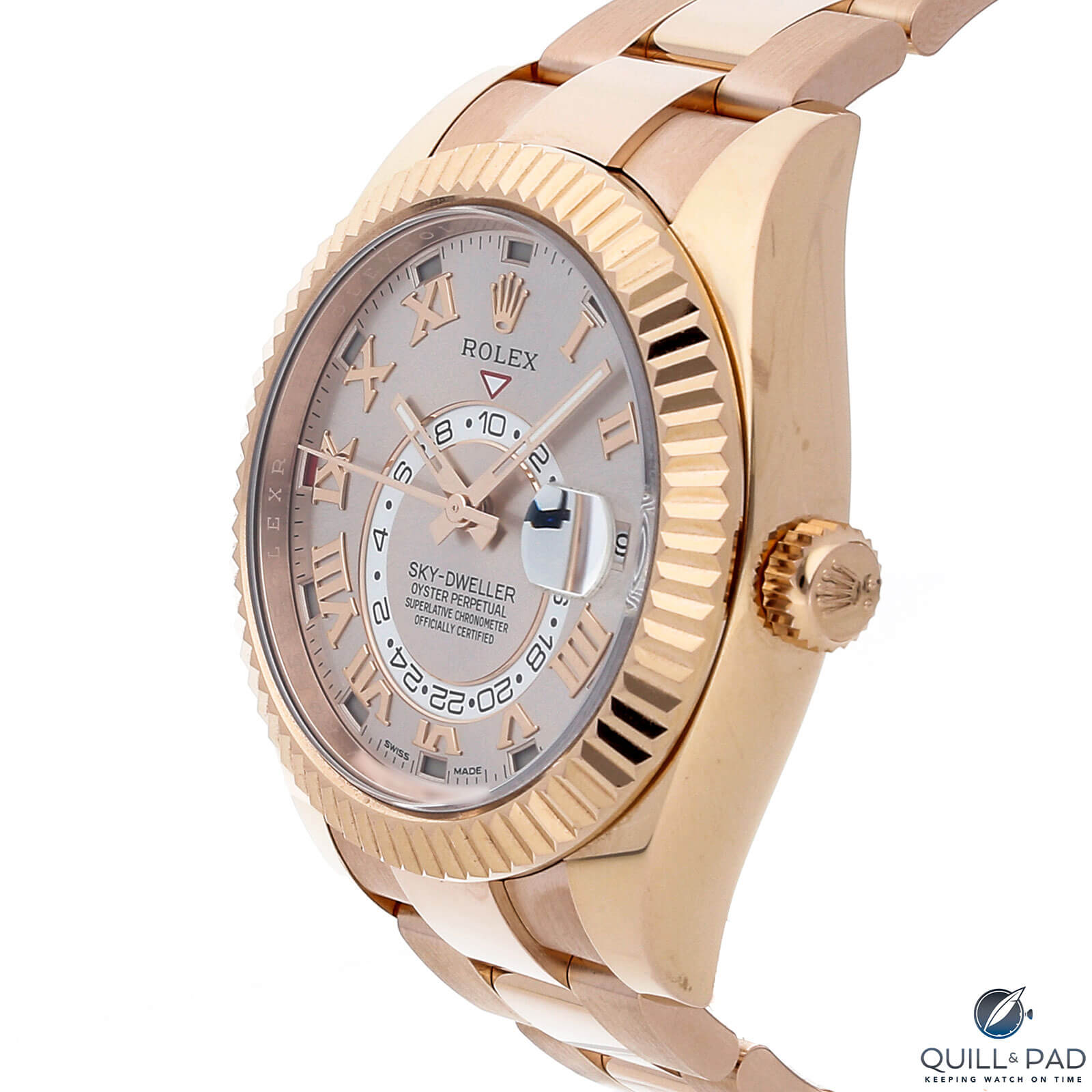
A 2012 Rolex Sky-Dweller in gold (photo courtesy WatchBox)
While stunning, the arrival of the Sky-Dweller could have been anticipated via diligent reading of Rolex’s U.S. patent applications. As far back as 2003, U.S. patent number 6744696 described an annual calendar system based solely on wheels and pared down to the minimum necessary parts count.
The elegant system was described as a solution for a “clock,” but a quick review of Rolex’s sparse modern clock portfolio suggests that this was little more than a smokescreen.
More insight arrived in April 2005 via U.S. patent number 7242640. The original statement of intent to develop an annual calendar moved into the product-engineering phase. No longer posing any pretense of clockmaking, the 2005 patent application specified the following:
“An annual date mechanism for a timepiece movement comprising a 31-toothed date runner, a jumper in mesh with its toothset, a months satellite . . . designed for twelve for the months comprising less than 31 days, a fixed planetary toothset coaxial with the date runner and in a direct-drive relationship with the months satellite.”

Rolex Sky-Dweller (photo courtesy WatchBox)
Another piece of the Rolex roadmap appeared in June 2011, less than a year before the launch of the Sky-Dweller, when Rolex filed U.S. patent number 8328414 for a bezel-based function selector by which “the function and/or indication which is to be adjusted is selected using a rotating bezel. Because of this the number of functions and/or indications which are to be adjusted can be high, as the bezel can rotate through 360 degrees.
—————————————————————————————————–
—————————————————————————————————–
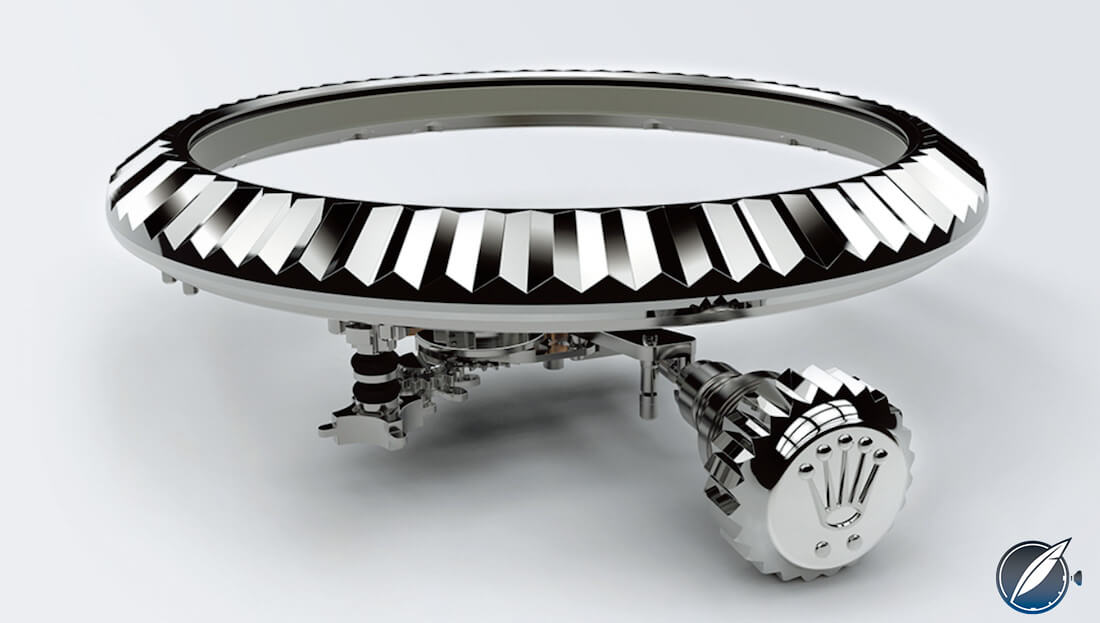
Rolex Sky-Dweller Ring Command Bezel
“Advantageously, the setting control comprises a two-position stem, one position of which is a winding position and the second position of which is an adjustment position. Thus, a single two-position stem can be used to adjust a number of functions and/or time indications which is substantially greater than its single adjustment position.”
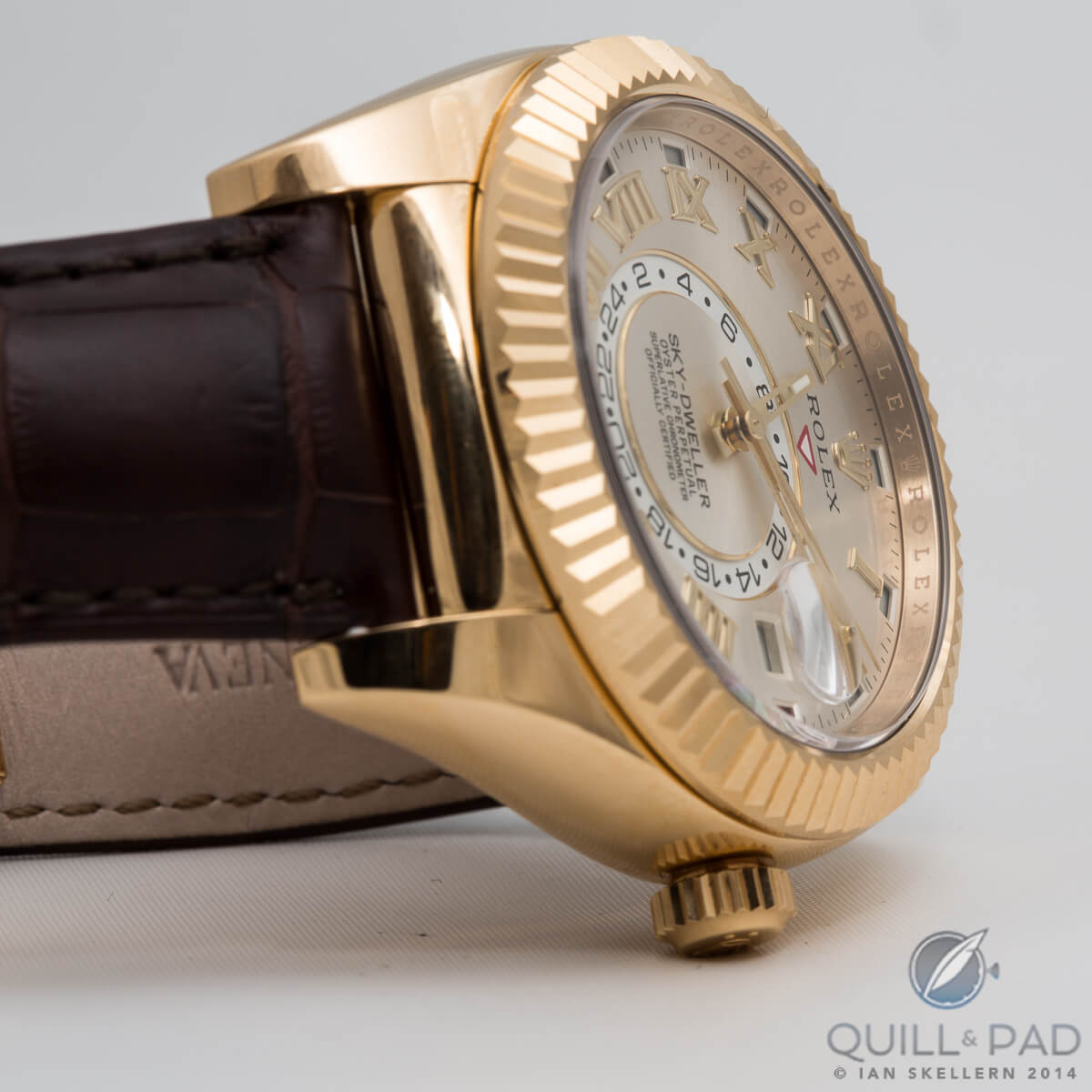
The Ring Command bezel is easy to use on the Rolex Sky-Dweller
In hindsight, Rolex was trying to protect itself ahead of a major product launch, but rarely have Rolex patents so explicitly and thoroughly previewed the consumer product to follow.
And what a product. The Sky-Dweller’s Caliber 9001 is a monster comprising the most individual parts of any Rolex movement past or present.
With 380 components, the 9001 narrowly eclipses the regatta chronograph, and the simplicity of the Ring Command bezel interface cloaks the fearsome mass of moving parts within; the bezel system alone accounts for 60 parts.
Perhaps chastened by growing pains with the Caliber 4160 regatta timer, Rolex seems to have taken great pains to ensure the mammoth Caliber 9001 lived up to Rolex levels of toughness.
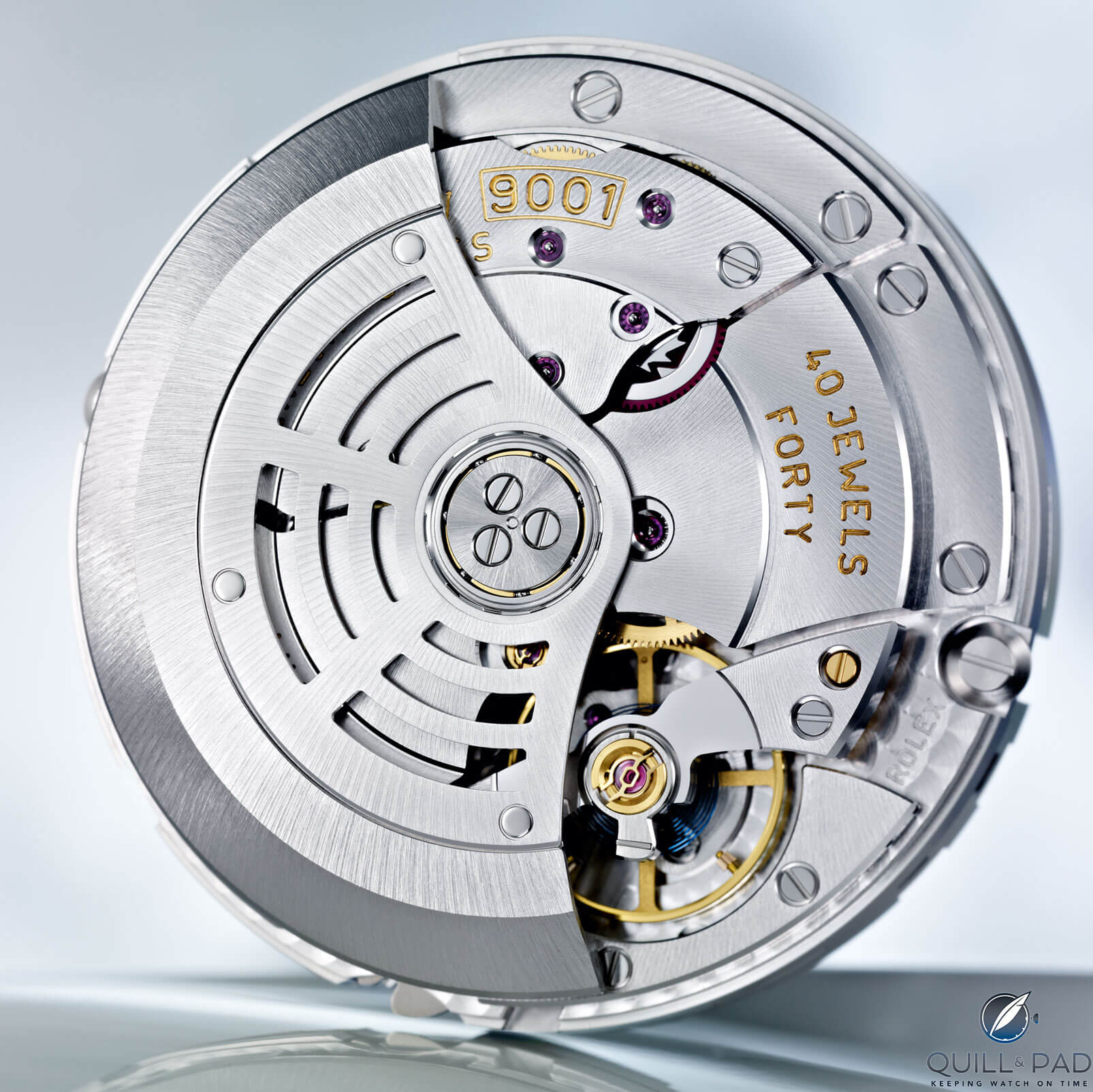
Rolex Caliber 9001
The Rolex annual calendar system, dubbed “Saros” after celestial phenomena, can be set bidirectionally without damaging the movement. As with the Ludwig Oechslin annual calendars designed for the MIH watch, Zenith and Ochs und Junior, the Rolex system is designed and constructed with usability and reliability in mind.
Peripheral features include a 70-hour power reserve, winding-rotor bearings, a niobium-zirconium oxidized non-magnetic hairspring, and a free-sprung balance with a full bridge.
To put the complexity of Rolex Caliber 9001 in perspective, consider that Audemars Piguet’s modular chronograph in the Royal Oak Offshore (3126/3840) includes 365 parts and the Patek Philippe 5370P’s split-second chronograph Caliber CH29-535PS includes 312 parts, both exceptional haute horlogerie movements.
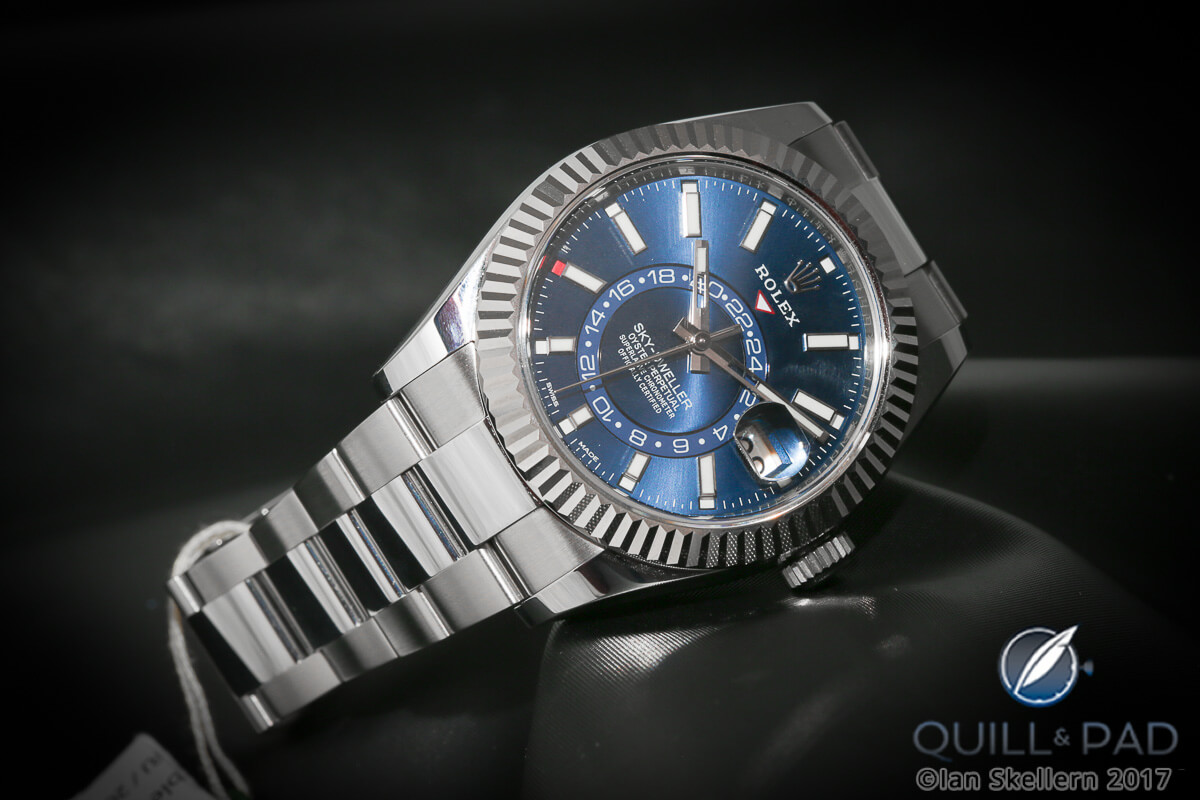
Rolex Sky-Dweller Reference 326934 in white gold and stainless steel (Rolesor) launched in 2017
Moreover, Rolex democratized the Sky-Dweller in 2017 with a – mostly – stainless steel model priced at less than one-third of the original $48,850.
For those who love movements but are reluctant to pay a precious-metal premium, Rolex prices the $14,400 Sky-Dweller 326934 within shouting distance of the $12,400 Daytona.
—————————————————————————————————–
—————————————————————————————————–
Rolex: the brand comes first, model families second, movements third
Although new models steal headlines, and no watch brand self-promotes with the gusto and grandeur of Rolex, the segment juggernaut tends to steer buyer attention away from movement engineering.
Despite the arrival of two monstrous complications in the space of five years, Rolex refused to redefine itself as a company or a brand. Ongoing innovations occurred as a sub-text to celebrity ambassadors, event sponsorship, and mainstream media campaigns.
The tension between Rolex’s movement innovations and branding exercises contribute, in part, to blame for watch collectors’ tendency to overlook Rolex watchmaking.
Part III of this series will explore the primacy of branding at Rolex and its impact on the company’s public reputation for movement innovation.
For more information, please visit www.rolex.com/watches/yacht-master and/or www.rolex.com/watches/sky-dweller.
Quick Facts Rolex Oyster Perpetual Yacht-Master II Reference 116680
Case: 44 x 13.9 mm, stainless steel
Movement: automatic Caliber 4161, 70-hour power reserve, 4 Hz/28,800 vph frequency, officially certified C.O.S.C. chronometer
Functions: hours; minutes; hacking seconds; programmable regatta countdown timer with memory in 0-10 minute range; flyback chronograph
Price: $18,750 in steel; steel/gold and full precious metal available at varying prices
Quick Facts Rolex Oyster Perpetual Sky-Dweller
Case: 42 x 14 mm, stainless steel with white gold Ring Command bezel
Movement: automatic Caliber 9001, 70-hour power reserve, 4 Hz/28,800 vph frequency, , Parachrom hairspring, Paraflex shock absorption, Superlative Chronometer certification (C.O.S.C. and Rolex certification after casing)
Functions: hours, minutes, hacking seconds; second time zone, annual calendar with date and month
Price: $14,400 (silver, blue, or black dials); full precious metal optional at varying prices
Tim Mosso is the media director at Watchbox; you can find his video reviews at https://tv.thewatchbox.com/reviews.
* This article was first published 15 April 2019 at The Golden Age Of Rolex Movements Part II: Rolex Gets Complicated With Innovations And Patent Registrations
You may also enjoy:
The Golden Age Of Rolex Movements Part I: Sowing The Seeds Of Greatness
Spending Time With The Most Complicated In-House Rolex: The Sky-Dweller
Why I Bought It: Rolex Sky-Dweller In Stainless Steel Rolesor
Rolex Milgauss Review – The Most Underrated Rolex?
Exceptional Movements In History: Rolex Caliber 1575, The Watchmaker’s Watch
Rolex Case Study: How Many Watches and How Much Money Does Rolex Make?
Rolex Submariner vs. GMT Master II: Small Differences, Difficult Decision
Leave a Reply
Want to join the discussion?Feel free to contribute!

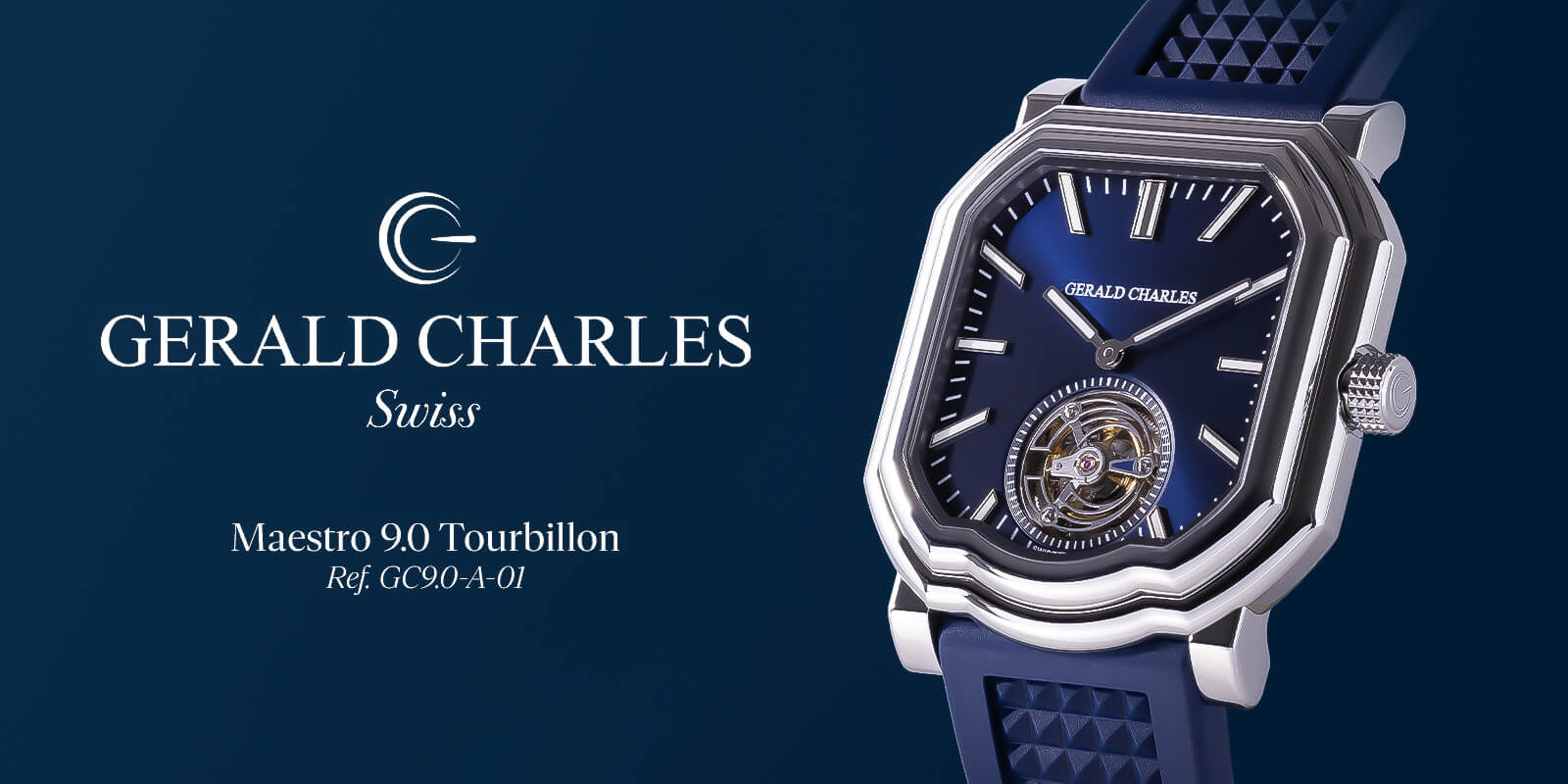

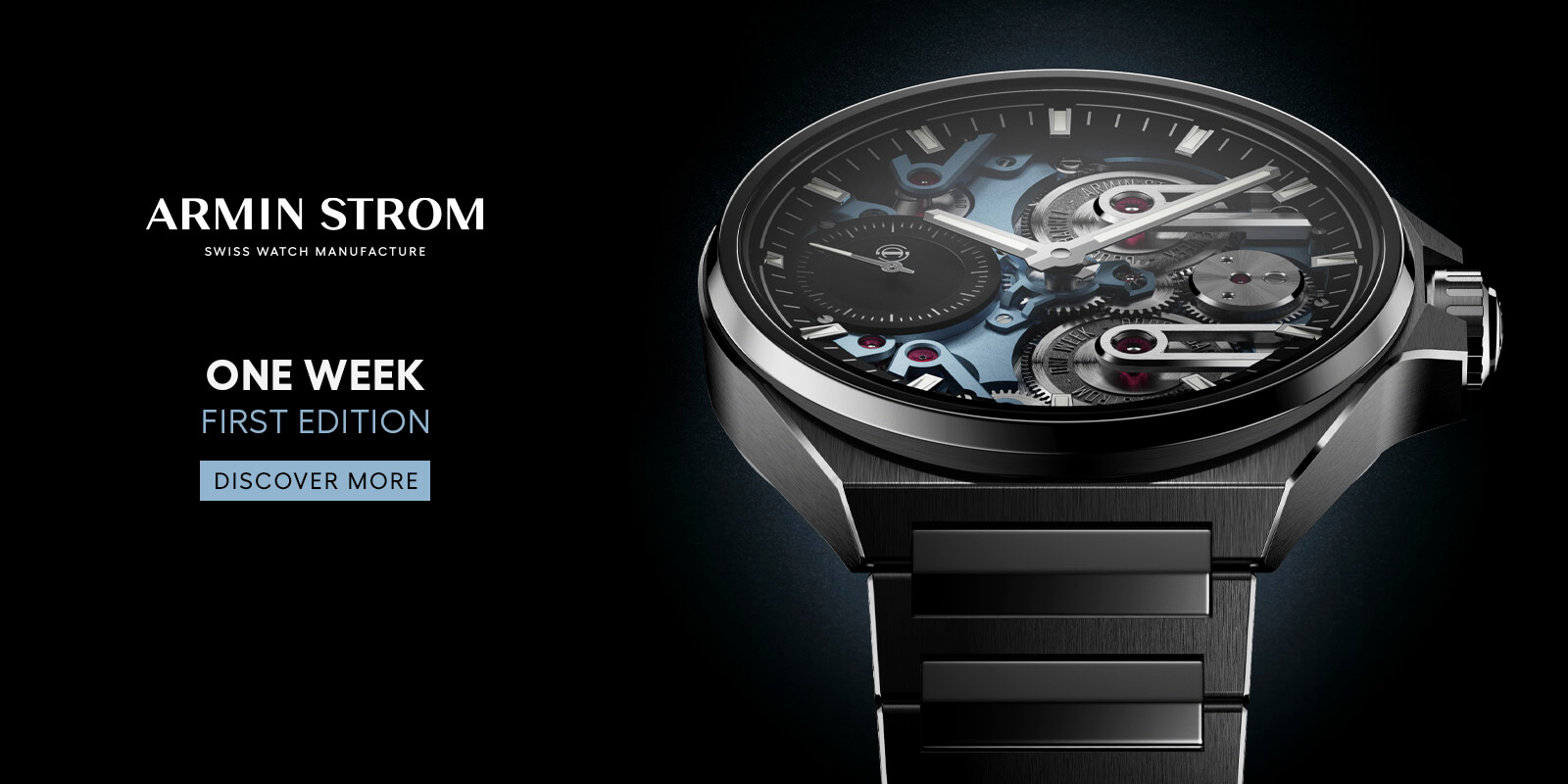
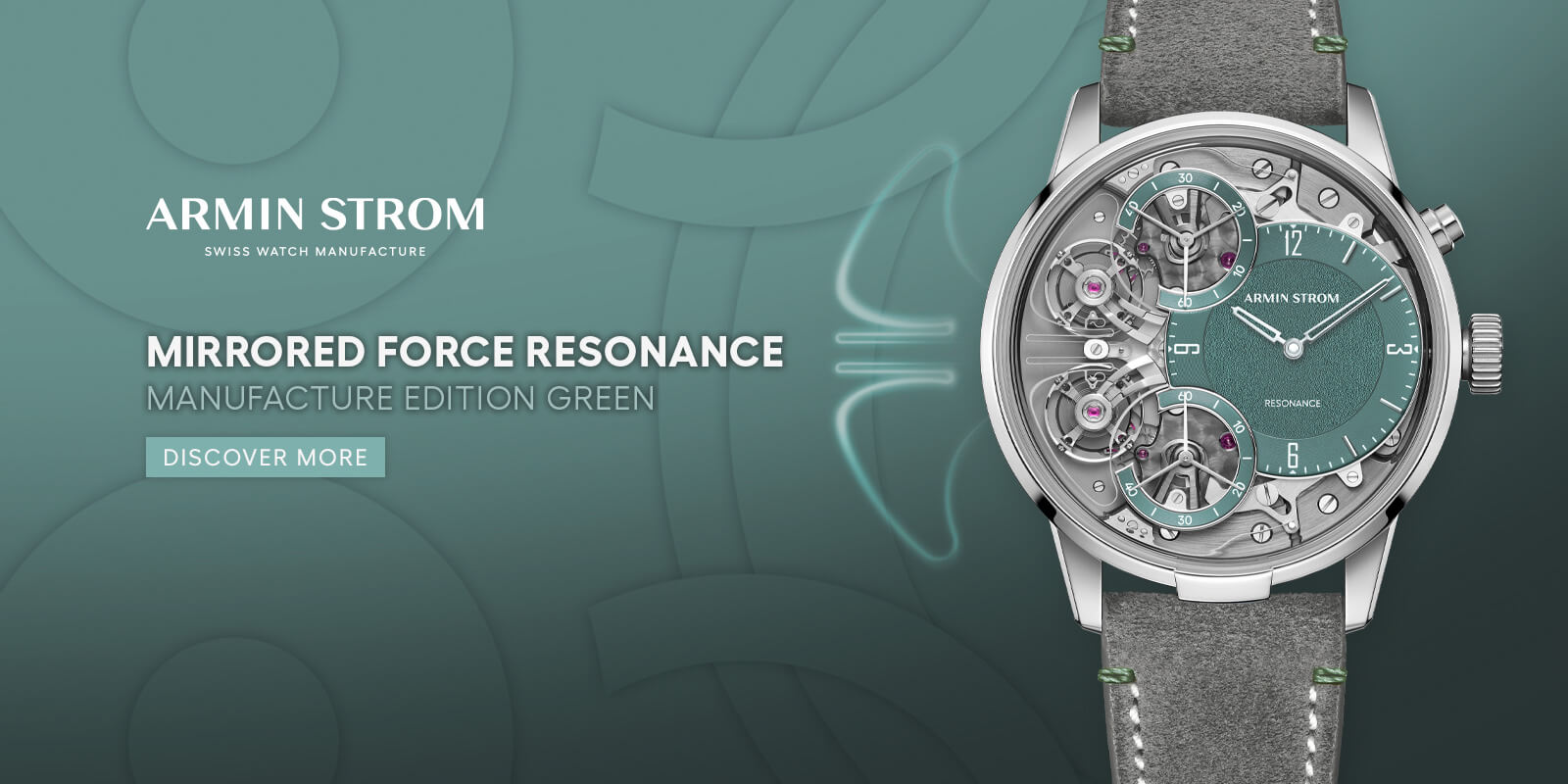


Did you mean 326934 for the “Rolesor” steel Sky-Dweller? The photo caption gets it right, but the text has a typo. Thanks for a great read!
Thank you Michael, that’s been corrected.
Regards, Ian